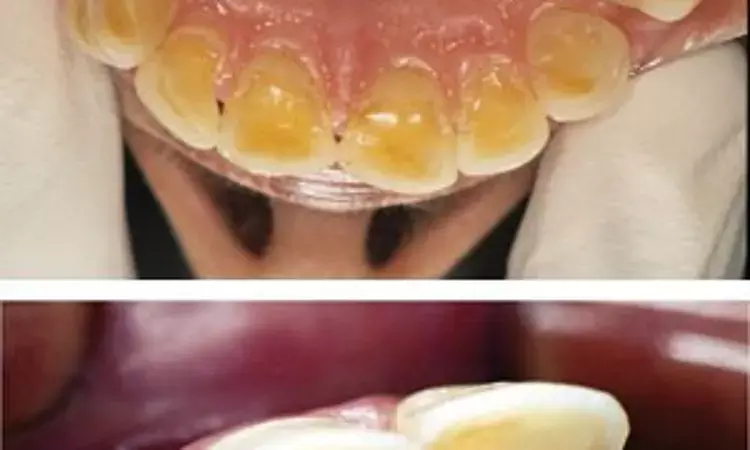- Home
- Medical news & Guidelines
- Anesthesiology
- Cardiology and CTVS
- Critical Care
- Dentistry
- Dermatology
- Diabetes and Endocrinology
- ENT
- Gastroenterology
- Medicine
- Nephrology
- Neurology
- Obstretics-Gynaecology
- Oncology
- Ophthalmology
- Orthopaedics
- Pediatrics-Neonatology
- Psychiatry
- Pulmonology
- Radiology
- Surgery
- Urology
- Laboratory Medicine
- Diet
- Nursing
- Paramedical
- Physiotherapy
- Health news
- Fact Check
- Bone Health Fact Check
- Brain Health Fact Check
- Cancer Related Fact Check
- Child Care Fact Check
- Dental and oral health fact check
- Diabetes and metabolic health fact check
- Diet and Nutrition Fact Check
- Eye and ENT Care Fact Check
- Fitness fact check
- Gut health fact check
- Heart health fact check
- Kidney health fact check
- Medical education fact check
- Men's health fact check
- Respiratory fact check
- Skin and hair care fact check
- Vaccine and Immunization fact check
- Women's health fact check
- AYUSH
- State News
- Andaman and Nicobar Islands
- Andhra Pradesh
- Arunachal Pradesh
- Assam
- Bihar
- Chandigarh
- Chattisgarh
- Dadra and Nagar Haveli
- Daman and Diu
- Delhi
- Goa
- Gujarat
- Haryana
- Himachal Pradesh
- Jammu & Kashmir
- Jharkhand
- Karnataka
- Kerala
- Ladakh
- Lakshadweep
- Madhya Pradesh
- Maharashtra
- Manipur
- Meghalaya
- Mizoram
- Nagaland
- Odisha
- Puducherry
- Punjab
- Rajasthan
- Sikkim
- Tamil Nadu
- Telangana
- Tripura
- Uttar Pradesh
- Uttrakhand
- West Bengal
- Medical Education
- Industry
Monitoring salivary pH valuable for management of tooth wear, especially in GERD

Monitoring salivary pH valuable for the assessment and management of tooth wear, especially in GERD suggests a new study published in the Journal of Dentistry.
A protocol was developed a priori (PROSPERO CRD42022338590). Established systematic review methods were used for screening, data extraction, and synthesis. Risk of bias and the certainty of evidence were assessed using the JBI tools and GRADE, respectively. Direct and indirect association between tooth wear and salivary components and characteristics were assessed.
Results
One-hundred eleven studies were included. Qualitative analyses showed a negative association between tooth wear and salivary pH and flow rate in many studies. The higher the study size the higher the chances that an association with pH and flow rate was found. Xerostomia, buffer capacity and salivary consistency/viscosity had also some degree of association with tooth wear in fewer studies. Associations with the 39 salivary components were scarcer. Random effects meta-analyses (7 studies) showed that pH levels in stimulated whole saliva were lower in patient with tooth wear compared to controls (−0.07 [−0.10 to −0.04]). However, there was not enough evidence to establish a quantitative association with flow rate. The general risk of bias was unclear and the certainty of evidence was low or very low. A large diversity of methodologies limited the inclusion of all studies in quantitative synthesis.
Conclusion
From all potential risk factors, stimulated whole saliva pH showed a negative association, both quantitatively and qualitatively with tooth wear, indicating potential usefulness of pH monitoring in these patients. Moreover, associations between flow rate and tooth wear were observed qualitatively. However, in both cases the risk of bias was mostly unclear, and the certainty of evidence was low. No causal associations could be observed. Tooth wear is a prevalent condition that may lead to functional or esthetic impairments and pain. Knowing the potential risk factors like salivary pH or flow rate and their dynamics could be relevant during tooth wear monitoring and to intervene accordingly, especially in conditions like gastroesophageal reflux disease.
Reference:
Víctor I. Madariaga, Tatiana Pereira-Cenci, X. Frank Walboomers, Bas A.C. Loomans,
Association between salivary characteristics and tooth wear: A systematic review and meta-analysis, Journal of Dentistry, Volume 138, 2023, 104692, ISSN 0300-5712,
https://doi.org/10.1016/j.jdent.2023.104692.
(https://www.sciencedirect.com/science/article/pii/S0300571223002786)
Keywords:
Monitoring, salivary, pH, valuable, assessment, management, tooth wear, especially, GERD, Journal of Dentistry, Saliva; Risk factors; Tooth wear; Tooth erosion; Physiological phenomena; Secretome, Víctor I. Madariaga, Tatiana Pereira-Cenci, X. Frank Walboomers, Bas A.C. Looma
Dr. Shravani Dali has completed her BDS from Pravara institute of medical sciences, loni. Following which she extensively worked in the healthcare sector for 2+ years. She has been actively involved in writing blogs in field of health and wellness. Currently she is pursuing her Masters of public health-health administration from Tata institute of social sciences. She can be contacted at editorial@medicaldialogues.in.
Dr Kamal Kant Kohli-MBBS, DTCD- a chest specialist with more than 30 years of practice and a flair for writing clinical articles, Dr Kamal Kant Kohli joined Medical Dialogues as a Chief Editor of Medical News. Besides writing articles, as an editor, he proofreads and verifies all the medical content published on Medical Dialogues including those coming from journals, studies,medical conferences,guidelines etc. Email: drkohli@medicaldialogues.in. Contact no. 011-43720751


